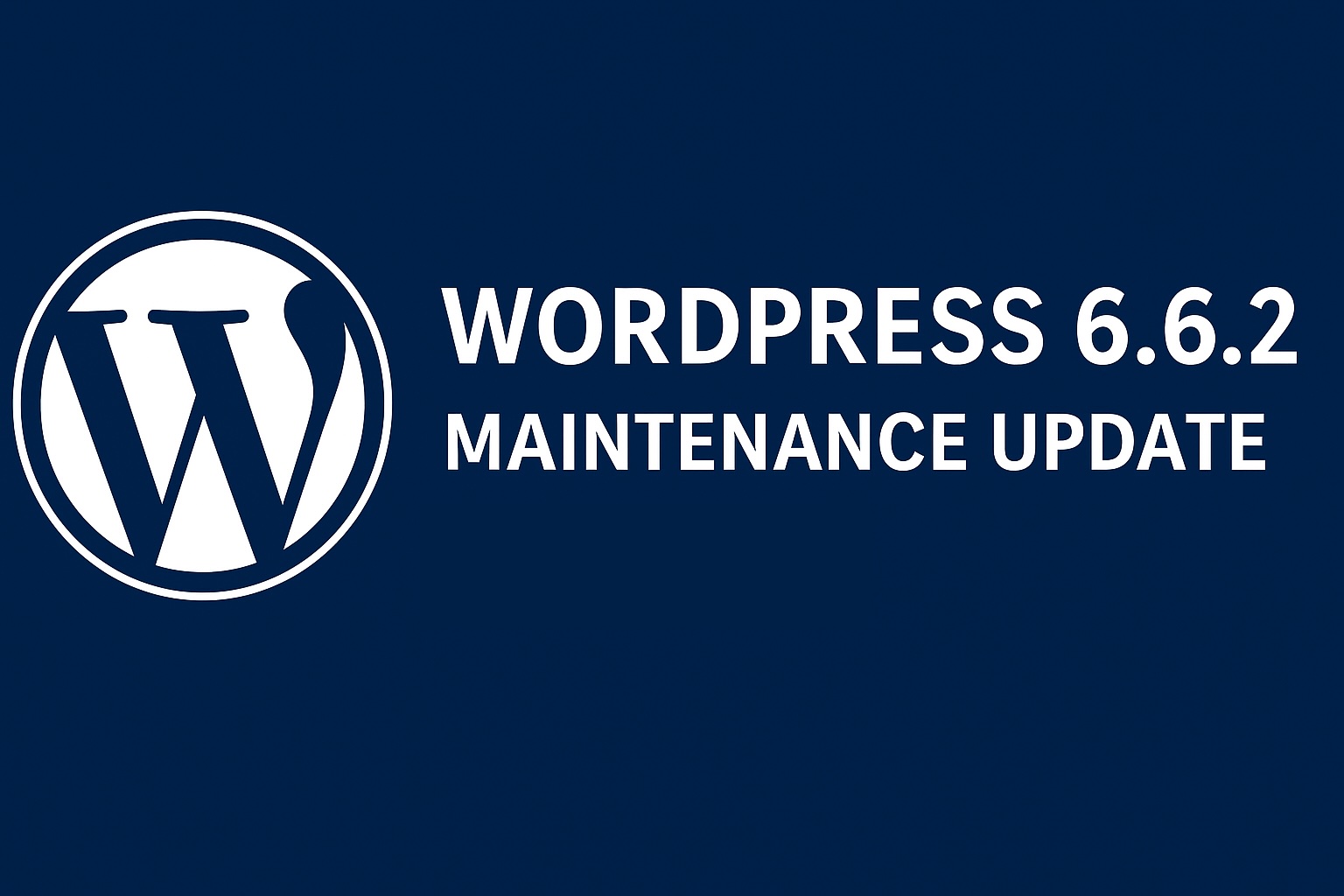Update Highlights
- WordPress 6.6.2 was a short-cycle maintenance release that delivered 15 Core fixes and 11 Block Editor fixes. It’s safe to update and recommended for stability.
- No new core vulnerabilities were announced with 6.6.2; it primarily addressed bugs (including CSS specificity regressions) and editor stability.
- If you haven’t updated yet, back up → update → test. If you manage critical stores or media sites, consider a short staging run first.
- Need help? See our WordPress Audit and Custom WordPress Development services.
Table of Contents
Why 6.6.2 mattered (even if it wasn’t a security fire drill)
WordPress 6.6.2 landed as a maintenance release with 15 bug fixes to Core and 11 fixes to the Block Editor. The focus was on stability and resolving theme/editor regressions-most notably unexpected CSS specificity behavior impacting some themes. This release came ahead of the next major on the roadmap and is considered a safe, recommended update.
Official notes emphasize maintenance/stability rather than new security patches. Several trusted security roundups at the time also highlighted 6.6.2 as a maintenance update, not a core security fix drop.
What was fixed in 6.6.2 (high level)
- Core: stability and quality-of-life fixes across the platform (15 tracked items).
- Block Editor: improvements and regressions resolved (11 items), including style/specificity inconsistencies that affected some themes.
For the historical release timeline and dev notes around 6.6.2 planning, see the Make/Core scheduling post.
Does 6.6.2 include security fixes?
The official announcement categorized 6.6.2 as a maintenance release. Security trackers and roundups from the period likewise pointed to bug/stability improvements rather than newly disclosed core CVEs. Keep in mind that most WordPress risk surface is in plugins and themes, not core-so staying current on plugin updates is critical.
For ongoing context, weekly reports around that time show a high volume of plugin vulnerabilities-reinforcing why your patch cadence matters even when core is quiet.
Should you update if you’re on 6.6.x already?
Yes. If you run 6.6.x, move to 6.6.2 to pick up stability fixes that may affect editor behavior and theme CSS edge cases. The standard best practice applies:
- Back up your site & database.
- Update core (and queued plugin/theme updates).
- Smoke test critical flows (checkout, logins, forms, paywalls, editorial workflows).
- If you maintain strict SLAs, run the update on staging first, then roll to production during a low-traffic window.
Need a checklist? Use our internal guide: WordPress Maintenance Checklist for Enterprise Websites.
Recommended test plan for enterprises
- Visual QA: check global styles, pattern overrides, and any custom block styles-especially places where theme CSS previously needed specificity workarounds.
- Editor QA: create/edit long-form posts with embeds, patterns, and custom blocks; confirm editorial workflows and scheduled publishing.
- E-commerce QA (WooCommerce): cart → checkout → payment → webhooks; confirm tax/shipping and transactional emails.
- Performance: compare LCP/INP on a few key templates after the update.
- Access & roles: ensure editors/authors retain the expected capabilities (custom roles often hide regressions).
- Search indexing: check critical sitemaps and structured data still validate.
If you need hands-on help, talk to us about Custom WordPress Development or a WordPress Audit.
How 6.6.2 fits into the broader 6.6 cycle
WordPress 6.6 introduced major editor-level improvements (patterns, design tooling, accessibility, etc.). If you’ve delayed 6.6 adoption, take the opportunity to re-assess now-6.6.2 stabilizes the branch. For a refresher on what 6.6 delivered, see Kinsta’s overview.
Security posture: what to do next
Even if this was a maintenance-focused core release, the plugin ecosystem remains active. Keep an eye on reputable weekly roundups and patch promptly:
- Wordfence Weekly Vulnerability Reports, covering actively exploited plugin issues.
- SolidWP Vulnerability Reports, tracking disclosures and patched/unpatched counts.
- Sucuri roundups for historical context around maintenance-focused periods.
Also see our explainer: WordPress Security Update – September 2025: Trends & Risks for month-specific patterns.
Safe update runbook (copy/paste)
- Create a full backup (files + DB).
- Put site in maintenance (optional for high-traffic).
- Update to 6.6.2 via WP Admin → Updates or WP-CLI.
- Update all plugins/themes (prioritize security patches).
- Run your QA checklist (see above).
- Purge caches/CDN, re-preload where applicable.
- Monitor logs & Core Web Vitals for 24–48 hours.
Need a fallback? Our guide shows How to Safely Share WordPress Access if you want our team to step in.
When to call in help
- You’re seeing editor styling oddities after the update.
- You run WooCommerce and can’t risk checkout regressions.
- You maintain a publishing workflow with custom roles/block variations.
We offer Custom WordPress Development and E-commerce (WooCommerce) support, as well as WordPress Audit for deeper performance and security reviews.
Sources & further reading
- Official: WordPress 6.6.2 maintenance release notes-15 Core fixes, 11 Editor fixes.
- Release scheduling / dev notes for 6.6.2.
- WPTavern coverage of the release.
- SolidWP vulnerability reports highlighting that 6.6.2 coincided with ongoing plugin patch activity (no new core vulns noted in that week’s roundup).
- Sucuri roundups referencing 6.6.2’s maintenance scope.
- Wordfence weekly reports for the current plugin threat landscape.







